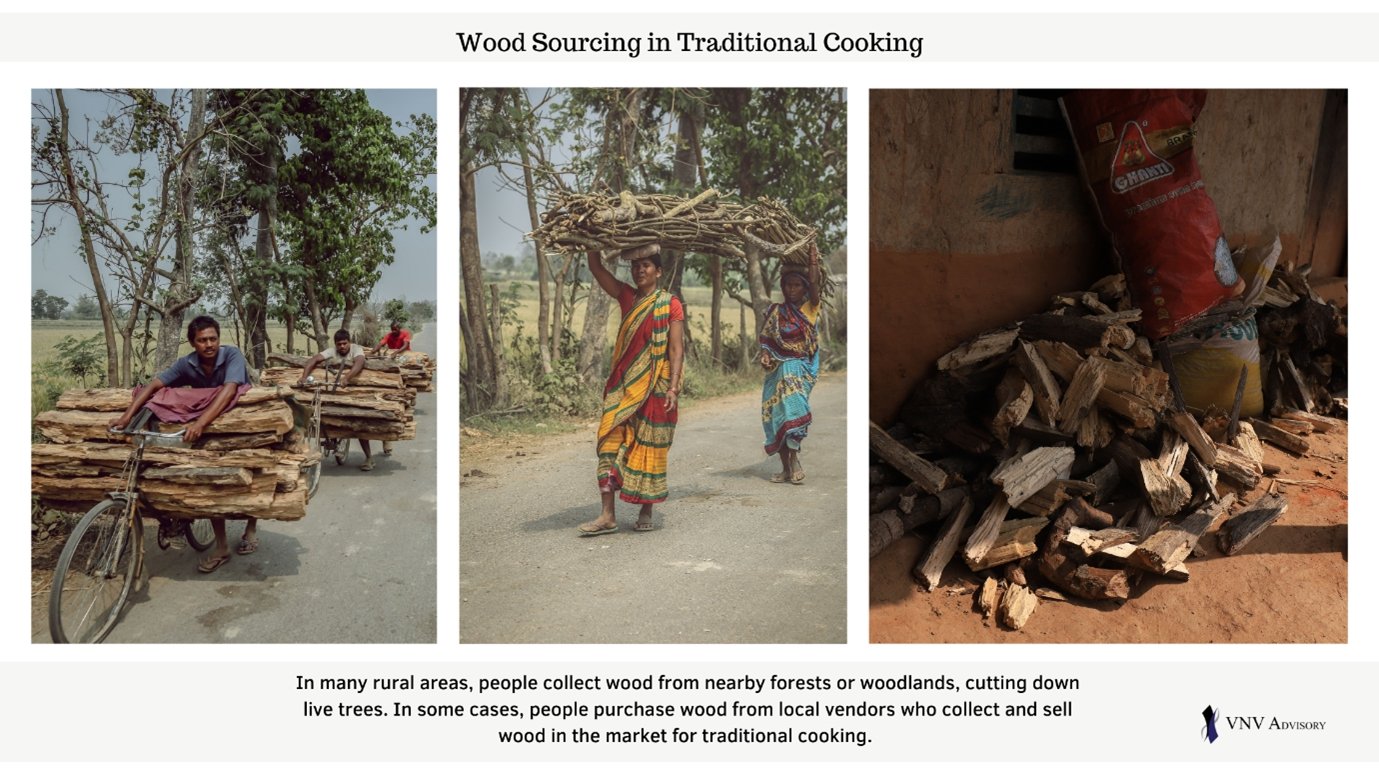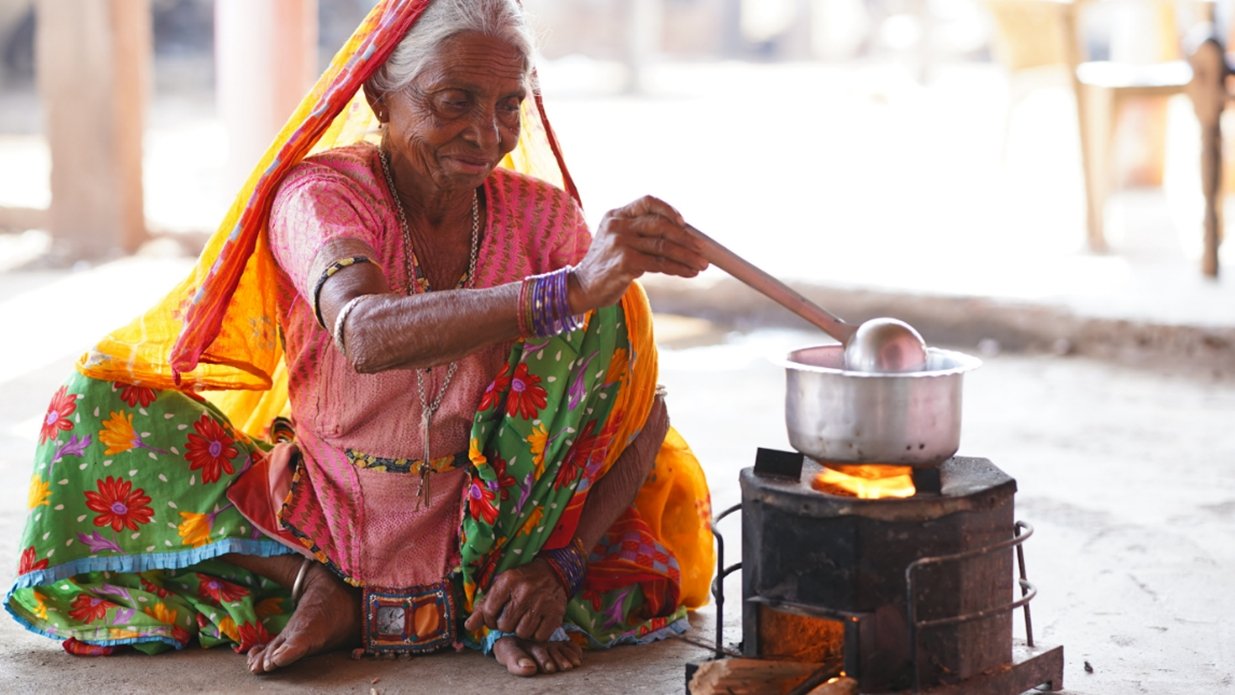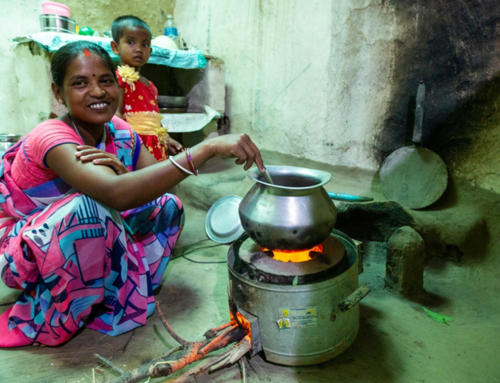Traditional cookstoves, often used in developing countries, rely on burning wood or other biomass fuels to cook food. However, this method of cooking has a negative impact on the environment. The inefficient combustion of biomass fuels leads to high levels of indoor air pollution, which can cause respiratory illnesses and other health problems. The search for alternative, sustainable solutions has become increasingly important.
Understanding Cookstove credits
Cookstove credits incentivise the adoption of cleaner, more efficient cookstoves in communities that rely on traditional cookstoves. Using improved cookstoves generates credits by reducing greenhouse gas emissions. Organisations or individuals seeking to offset their carbon footprint or meet regulatory requirements related to emissions reduction can buy them. We use the revenue generated from the sale of cookstove credits to support the distribution and adoption of improved cookstoves in communities that rely on traditional cookstoves. Cookstove credits have the potential to not only reduce emissions but also improve the health and well-being of communities impacted by conventional cookstoves.
Cookstove credits can be a powerful tool for nature-based solutions, which are actions that protect, sustainably manage and restore natural or modified ecosystems to address societal challenges. Here is a closer look at how cookstove credits are nature-based solutions.
I. Cookstove credits for climate change mitigation
- Reduced greenhouse gas emissions: By incentivizing households to switch to cleaner cookstoves, cookstove credits can help reduce greenhouse gas emissions. According to the World Health Organization, cleaner cookstoves can reduce carbon dioxide emissions by up to 50% compared to traditional stoves. This reduction in greenhouse gas emissions can help mitigate climate change’s impacts.
- Sustainable energy: Cookstove credits can encourage using renewable energy sources such as biogas, solar, and biomass briquettes. These renewable energy sources can reduce greenhouse gas emissions and promote sustainable development.
- Health co-benefits: Traditional stoves contribute to climate change and emit harmful pollutants that can cause respiratory illnesses. By promoting cleaner cookstoves, cookstove credits can improve indoor air quality and reduce the negative health impacts of traditional stoves.
II. Cookstove credits for biodiversity conservation
- Reduced pressure on forests: People often obtain wood or other biomass fuels through unsustainable harvesting of forests to fuel traditional cookstoves, which require large amounts of fuel. This practice can lead to deforestation and habitat destruction, which can have devastating impacts on biodiversity. By encouraging households to switch to cleaner cookstoves that use less fuel, cookstove credits can help reduce the pressure on forests, thereby conserving biodiversity.
- Protection of wildlife: Forests are home to many wildlife species, including endangered species. By reducing the demand for wood fuel, cookstove credits can help protect the habitats of these species, promoting their conservation.
- Preserving ecosystem services: Forests provide essential ecosystem services such as carbon sequestration, water regulation, and soil conservation. By reducing the pressure on forests, cookstove credits can help preserve these critical services, contributing to biodiversity conservation.
- Improved air quality: Traditional cookstoves emit large amounts of smoke, which can negatively impact the health of humans and wildlife. By encouraging households to switch to cleaner cookstoves, cookstove credits can help reduce the emissions of harmful pollutants, improving air quality and promoting the health of ecosystems.
III. Cookstove credits for gender equality and public health
- Improved health outcomes: By reducing indoor air pollution, cleaner cookstoves can improve health outcomes, particularly among women and children who spend significant time near the stoves. Improved health outcomes can help to reduce gender inequalities by enabling women to engage in productive activities and access education and training without being limited by poor health.
- Economic opportunities: Cleaner cookstoves can provide women with increased economic opportunities by reducing the time required for cooking. With more time, women can engage in income-generating activities or pursue education and training. This can help to bridge gender gaps by enabling women to participate more fully in the economy.
- Empowerment: By reducing the burden of cooking and improving health outcomes, cleaner cookstoves can empower women in rural areas. Empowerment can help to bridge gender gaps by enabling women to participate more fully in decision-making processes and access education and training.
Clean cooking, a sustainable solution for reforestation in the rural global south
Improved cookstoves may use less fuel or rely on alternative energy sources like solar or biogas. The idea behind these projects is to reduce the pressure on forests by lowering the demand for fuelwood and mitigating deforestation caused by unsustainable harvesting. When the dependency on forests for fuelwood decreases, the natural reforestation process can be positively influenced in the following ways:
- Reduced deforestation: Forests are crucial in mitigating climate change by acting as carbon sinks, capturing, and storing carbon dioxide from the atmosphere. Reduced deforestation and increased reforestation can enhance this process, helping to combat global warming.

- Enhanced regeneration: The natural processes of tree growth, seed dispersal, and germination can occur more effectively when people do not heavily exploit forests for fuelwood. As a result, trees can regenerate more rapidly, and the forest ecosystem can recover faster.
- Biodiversity conservation: Forest ecosystems are home to many flora and fauna. Reducing fuelwood demand enables us to reduce deforestation, which preserves these habitats and allows native species to continue thriving, thereby promoting the ecosystem’s overall health.
- Carbon sequestration: Forests are crucial in mitigating climate change by acting as carbon sinks, capturing, and storing carbon dioxide from the atmosphere. Reduced deforestation and increased reforestation can enhance this process, helping to combat global warming.
- Soil and water conservation: Forests help maintain soil quality and prevent erosion by anchoring the soil with their roots. When forests can regenerate naturally, these essential processes are maintained, contributing to the environment’s overall health.

Opportunities for Further Development and Scaling of Cookstove Credit Programs
- Increasing awareness and education about the benefits of improved cookstoves and cookstove credits among potential users, stakeholders, and investors.
- Leveraging technological advances, such as mobile payments and remote monitoring, to reduce transaction costs and improve the scalability and transparency of Cookstove credit programs.
- Strengthening partnerships and collaboration among different stakeholders to leverage their respective strengths and resources and to promote alignment and coherence in the implementation of cookstove credit programs.
- Integrating cookstove credit programs with other development initiatives and programs, such as health, education, and gender equality programs, to maximize their impact and achieve multiple SDGs.
The Potential of Cookstove Credits in Contributing to Multiple SDGs
SDG 1: No Poverty
Clean cooking can help reduce poverty by saving money on fuel and reducing health care costs associated with indoor air pollution caused by traditional cooking methods.
SDG 2: Zero Hunger
Clean cooking can help increase food security by reducing the time and effort required to gather fuel and cook food, allowing families to spend more time on productive activities such as farming.
SDG 3: Good Health and Well-being
Traditional cooking methods, such as open fires and inefficient stoves, release harmful smoke that can cause respiratory problems and other health issues. Clean cooking can improve indoor air quality and reduce the risk of illnesses.
SDG 4: Quality Education
Many parts of the world require children to spend hours gathering fuel for cooking instead of attending school, but clean cooking can reduce this burden and enable more children to receive an education.
SDG 5: Gender Equality
In many cultures, women and girls are responsible for cooking and gathering fuel, which can be dangerous and time-consuming. Clean cooking can reduce the time and effort required, allowing women and girls to pursue other opportunities such as education and employment.
SDG 6: Clean Water and Sanitation
Traditional cooking methods require large amounts of water for cleaning and cooking. Clean cooking can reduce water usage and pollution by using efficient stoves that require less water.
SDG 7: Affordable and Clean Energy
Clean cooking is a form of clean energy that can help reduce greenhouse gas emissions and improve energy access for communities without reliable access to electricity.
SDG 8: Decent Work and Economic Growth
Clean cooking can create new jobs in producing and distributing clean cookstoves and fuel and increase productivity and economic growth by reducing time spent on gathering fuel and cooking.
SDG 13: Climate Action
Traditional cooking methods can contribute to greenhouse gas emissions, particularly through deforestation and the burning of biomass fuels. Clean cooking can help reduce these emissions and contribute to global climate action.
SDG 15: Life on Land
Up to 34% of wood fuel harvested for clean cooking is unsustainable, leading to forest degradation, deforestation and contributing to climate change. Promoting sustainable forest management practices and reducing the use of traditional fuels for cooking is necessary. Additionally, sustainable forest management practices can help protect and conserve forests, preserve biodiversity, and support the livelihoods of local communities.
Listed below are VNV’s impactful cookstove projects:
- VCS2303: Energy Efficient cooking solution for low-emission development in Nepal
- VCS2357: Improved cookstove market development in rural Nepal
- GS11808: Integrated Domestic Energy Systems (IDES) for rural communities in India
- GS7466: Integrated Domestic Energy Systems (IDES) for Clean Energy access and clean cooking in rural households in India
At VNV Advisory, we recognize the significant potential of cookstove credits as a nature-based solution to address multiple sustainable development challenges. By promoting improved cookstoves through cookstove credit programs, we can help reduce reliance on traditional stoves that harm people and the environment.
We at VNV Advisory are committed to working with communities to support their transition to more sustainable practices and offer carbon offset projects that provide tangible benefits to those in need. Investing in these projects helps bridge the gap between perspectives and work towards a more just and sustainable future.
Contact us at sales@vnvadvisory.net to learn more about how you can make a difference.




